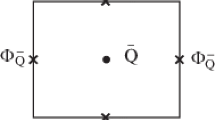Abstract
For problems related to radiative heat conduction, an algorithm is proposed that is well adapted to the architecture of systems with extramassive parallelism. According to the underlying method, a term with a small parameter multiplying the second time derivative is included in the model describing the process. Examples of numerical results obtained using this model on detailed spatial meshes are given, and their comparison with results based on the classical radiative heat conduction model are presented.


Similar content being viewed by others
REFERENCES
Ya. B. Zel’dovich and Yu. P. Raizer, Physics of Shock Waves and High-Temperature Hydrodynamic Phenomena (Dover, New York, 2002; Fizmatlit, Moscow, 2008).
B. N. Chetverushkin, Mathematical Simulation of Radiating Gas Dynamics (Nauka, Moscow, 1985) [in Russian].
D. V. Bisikalo, A. G. Zhilkin, and A. A. Boyarchuk, Gas Dynamics of Close Binary Stars (Fizmatlit, Moscow, 2013) [in Russian].
V. V. Kuzenov, A. I. Lebo, I. G. Lebo, and S. V. Ryzhkov, Physical and Mathematical Models and Methods for Calculating the Effects of High-Power Laser and Plasma Pulses on Condensed and Gaseous Media (Mosk. Gos. Tekh. Univ. im. N.E. Baumana, Moscow, 2017) [in Russian].
B. Nayak and S. V. G. Menon, Laser Particle Beams 30 (4), 517–523 (2012).
A. A. Samarskii and A. V. Gulin, Stability of Difference Schemes (URSS, Moscow, 2009) [in Russian].
V. E. Golant, A. P. Zhilinsky, and I. E. Sakharov, Fundamentals of Plasma Physics (Atomizdat, Moscow, 1977; Wiley, New York, 1980).
B. N. Chetverushkin, Kinetic Schemes and Quasi-Gasdynamic System of Equations (MAKS, Moscow, 2004; CIMNE, Barcelona, 2008).
S. I. Repin and B. N. Chetverushkin, Dokl. Math. 88 (1), 417–420 (2013).
E. E. Myshetskaya and V. F. Tishkin, Comput. Math. Math. Phys. 55 (8), 1270–1275 (2015).
M. D. Surnachev, V. F. Tishkin, and B. N. Chetverushkin, Differ. Equations 52 (7), 817–823 (2016).
B. N. Chetverushkin and A. V. Gulin, Dokl. Math. 86 (2), 681–683 (2012).
Funding
This work was supported by the Russian Foundation for Basic Research, grant no. 18-01-00587-a. The computations were performed on the K100 and K60 computers at the Federal Research Center Keldysh Institute of Applied Mathematics of the Russian Academy of Sciences.
Author information
Authors and Affiliations
Corresponding author
Additional information
Translated by I. Ruzanova
Rights and permissions
About this article
Cite this article
Chetverushkin, B.N., Olkhovskaya, O.G. Modeling of Radiative Heat Conduction on High-Performance Computing Systems. Dokl. Math. 101, 172–175 (2020). https://doi.org/10.1134/S1064562420020088
Received:
Revised:
Accepted:
Published:
Issue Date:
DOI: https://doi.org/10.1134/S1064562420020088




